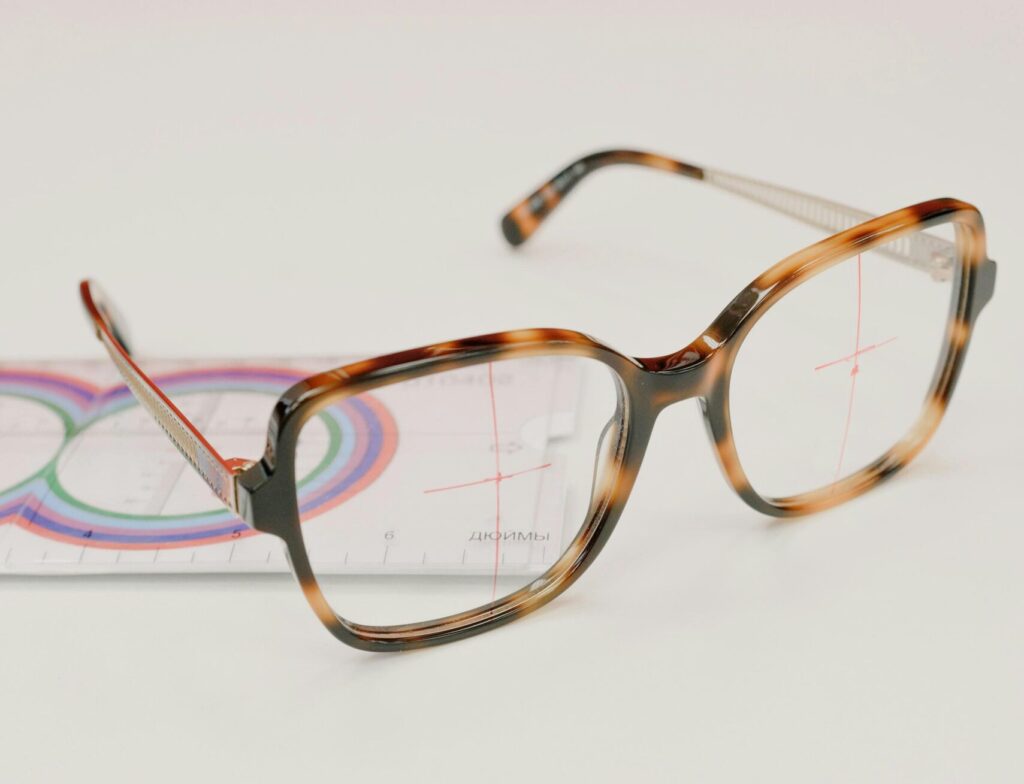What Are Prism Glasses?
There are a number of benefits to wearing prism glasses, including the reduction of double vision (also known as diplopia), as well as reducing eye strain (depending on the reason for the eye strain).
Vision clarity is corrected by prescription lenses. These lenses are used to correct vision errors such as nearsightedness, farsightedness, and astigmatism. Alternatively, prism lenses correct alignment or movement issues, rather than refractive errors. When the eyes are not aligned correctly, they are unable to produce a single image. In this case, prism glasses can be of assistance.
This comprehensive guide explains how prism glasses work, who they help, and how prism correction appears on a prescription (and everything else in between).
How Do Prism Glasses Work?
In prism glasses, light is directed in a three-dimensional triangle and its base is thicker than the top. Light is directed before entering the eye so that it hits the retina at the appropriate focal point. Orientation of the prism in the glasses lens is determined by the prescription (base up, base down, base in, or base out). This affects the way light is directed onto the retina by the lens.
In some cases, a prism correction can be implemented into a person’s glasses lens as a long-term solution.
The Fresnel prism can serve as an alternative to prism glasses when a prism correction is only necessary temporarily. Fresnel prisms are similar to thin stickers that can be applied directly to the lenses of standard spectacles.
Prism Glasses for Double Vision
People with double vision experience two separate images due to a problem with their eyes not working together properly. Prism eyeglasses correct for this problem by creating a single, clear image by reflecting light in different spots on the retina of each eye.
Who Needs Prism Glasses
Although some eye diseases or conditions can cause double vision, not all of them can be corrected with prism glasses. However, there are a number of conditions that may be helped by prism glasses, including:
-
The condition is commonly known as strabismus (crossed eyes).
-
The Graves’ disease
-
The disease of myasthenia gravis
-
Conditions affecting binocular vision, such as convergence insufficiency
Double vision can also be caused by neurological conditions (problems relating to the brain or the nervous system). These conditions include:
-
Having a stroke
-
Injury to the head
-
Anatomical tumor
-
Migraine
-
Multiple sclerosis
-
Diabetes mellitus
How Do Prism Glasses Look?
You will not notice any difference in the appearance of your glasses when a prism is included in your prescription and integrated into your lenses. The only difference is that prism lenses are sometimes noticeably thicker than standard lenses. Conversely, the temporary Fresnel prism, which is applied directly to the lens, may be noticeable.
When you receive prism glasses for the first time, your eye doctor will be able to answer any questions you may have regarding your prescription and lens thickness. It may be necessary to choose thicker frames for your glasses if you are concerned about lens thickness. If you do not mind the thickness of your lenses, you do not need to limit your frame choices at all because you may wear any frame you desire with a prism glasses prescription.
Understanding Your Prism Glasses Prescription
In case you have a prism correction included in your eye prescription, you will see numbers in a column labeled “prism.” The numbers tell you how strong or powerful the prism is. It is possible that the number you see is PD, which stands for “prism diopter.”.
In addition to the abbreviations in the column titled “base” you may also see abbreviations indicating the orientation of the prism’s thickest edge, namely its base. Here is the explanation of these abbreviations:
-
BU – Base up (the prism’s base is located at the top edge of the lens).
-
BD – Base down (the prism’s base is at the bottom edge of the lens)
-
BI – Base in (the prism’s base is within the lens’ inner edge)
-
BO – Base Out (the prism’s base lies on the edge of the lens)
Aligning on Next Steps
Hopefully this guide has helped clarify things.
Your eye doctor is the best person to ask about your prescription if you have any questions.
















